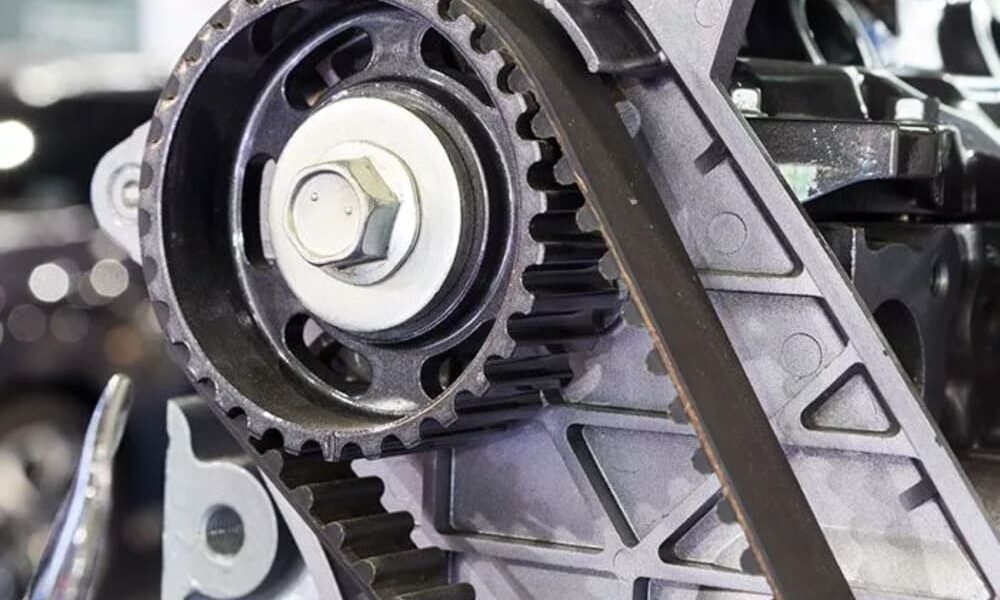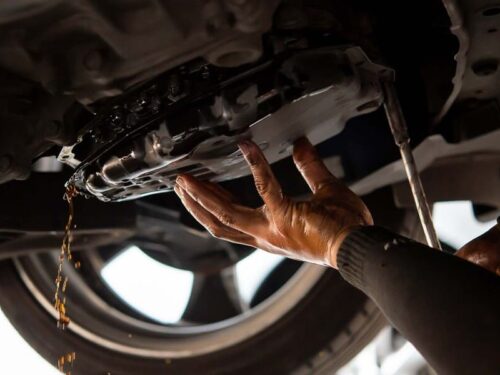
For most of us, the timing belt in our car is one of those parts we hear about from time to time but rarely think about. However, if you have a higher mileage car with a timing belt, we highly recommend you plan ahead to replace it before it breaks. Otherwise, not only will your car stop running, but you might also incur major damage to your engine. To help you understand why replacing the timing belt is important, here are some of our most frequently asked questions:
What Is A Timing Belt And What Does It Do?
The timing belt is a strong rubber belt that has teeth on it. It connects to parts of your engine that open and close the valves and that move the pistons up and down inside the engine cylinders. It’s called a timing belt because it synchronizes the critical movement of all these parts.
Do All Cars Have A Timing Belt?
All gasoline-powered cars, trucks and SUVs have some type of timing mechanism. Many cars have a rubber timing belt as described above, while others have a timing chain. While a timing chain rarely needs to be replaced, the timing belt almost always needs to be replaced during the normal life of the vehicle.
How Often Should A Timing Belt Be Replaced?
This depends on your vehicle, but most automobile manufacturers recommend replacing the timing belt between 90,000 – 105,000 miles. Your owner’s manual will provide specific information on the suggested replacement of your vehicle’s timing belt.
What Is The Average Cost Of A Timing Belt Replacement?
Ideally, you want to replace the belt before it breaks. The cost of this preventive maintenance service ranges between $500 and $1,000 for most vehicles. But if you delay too long and the belt breaks, it’s going to cost significantly more to replace. At best, you’re paying for a new belt and a tow truck ride to the shop. In other scenarios, you could have serious engine damage, such as bent valves or valves that collide with a piston and become embedded. This level of repair is often $2,000 or higher. We highly, highly encourage you to replace the timing belt before you’re at risk of it breaking unexpectedly.
Can The Timing Belt Be Inspected To See If It Needs To Be Replaced?
The vast majority of the time, the answer is “no.” Timing belts tend to be located in areas of the engine that are hard to reach without taking out certain parts for a better view. Even then, it can be difficult to impossible to accurately assess the condition of the belt. This is why we encourage car owners to replace the belt according to the maintenance schedule.
Should Anything Else Be Replaced At The Same Time?
Most auto shops, recommend that you replace the water pump when you replace the timing belt. On most vehicles, the water pump is located deep inside the engine as well, a bit beyond where the timing belt is. Replacing the water pump at the same time as the belt serves as preventive maintenance. It can save you a lot of money on future labor costs vs. risking it and having the water pump fail at a later time. Think of a timing belt replacement as preventive maintenance to preserve your car’s engine, provide safe travel and save you a lot of money and inconvenience.
Courtesy of autolablibertyville










